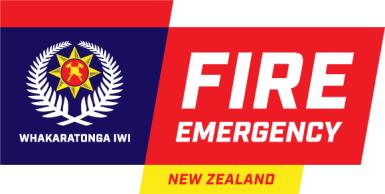

 National Headquarters
National Headquarters
Level 12
80 The Terrace
PO Box 2133
Wellington
New Zealand
Phone +64 4 496 3600
11 September 2020
Alan Thompson
By email: [FYI request #13440 email]
Dear Alan
Information Request –
Incident Management I refer to your official information request dated 3 August 2020 asking for information regarding
Fire and Emergency’s Incident Management Systems. Please see responses to your queries below.
The use of a common Incident Management System (sometimes also referred to as an Incident
Command System - ICS) is critical to effective coordination in any response - from a small event
such as a vehicle accident managed by emergency services, to a complex emergency where the
response spans multiple agencies and over considerable time.
An incident management system enables the establishment of common structures, functions and
terminology used by agencies in emergency response, yet within a framework that is flexible,
modular and scalable so that it can be tailored to circumstances specific to any level or type of
incident. In New Zealand, this system is called the Coordinated Incident Management System
(CIMS).
1. Confirm that Fire and Emergency’s move to Australasian Inter-Service Incident Management
System is complete as per the recommendation of the Port Hills Operational Review (September
2017) and set out in Fire and Emergency’s published Action Plan including the training of
relevant Fire and Emergency personnel and other agencies. If this move is not complete in the
three years since Port Hills, advise any outstanding tasks and the timeframe to complete the
move.
The establishment of Fire and Emergency New Zealand on 1 July 2017 was a significant step
towards improved interoperability between urban and rural firefighters, bringing them together in
one organisation under one piece of legislation. While work to gradually integrate their functions
into one organisation will be ongoing, urban and rural firefighters now operate under the same
interim command and control policy, and progress has also been made in working more closely
together through joint planning and training.
Fire and Emergency’s move to Australasian Inter-Service Incident Management System is not
complete and has yet to be progressed other than a decision in principle to move to Australasian
Inter-Service Incident Management System by December 2022. To complete the move, Fire and



Emergency needs to develop a command and control manual that reflects the new organisation
and develop training for our people in the new processes.
2. Provide a copy of the relevant sections of the Fire and Emergency Command and Control
Manual (or other instructions) as at 1 July 2020 that set out the instructions to its personnel in
establishing incident ground management for “Fire and Emergency Only” incidents.
Please find
enclosed, copies of the Incident Management Command and Control Technical Manual
and Interim Command and Control policy that Fire and Emergency personnel adhere to when
attending incidents where Fire and Emergency is the only agency involved.
3. Provide a copy of the relevant sections of the Fire and Emergency Command and Control
Manual (or other instructions) as at 1 July 2020 that set out the instructions to personnel in
establishing incident ground management for incidents where Fire and Emergency is the Lead
Agency but where other agencies are also involved.
When involved with an incident that requires multi-agency emergency management levels, Fire and
Emergency personnel work with other agencies under the CIMS structure and follow CIMS processes. As
such, there is no specific Fire and Emergency documentation that exists. However, you can access the
CIMS manual online by following the link below.
https://www.civildefence.govt.nz/assets/Uploads/CIMS-3rd-edition-FINAL-Aug-2019.pdf
Please note, the relevant sections relating to establishing incident ground management are:
Section 2.3 - Lead agencies and support agencies
Section 2.6 - Command, control and coordination
Section 2.7 - Unified Control
Section 4.4 - Control
4. Provide a copy of the relevant sections of the Fire and Emergency Command and Control
Manual (or other instructions) as at 1 July 2020 that set out the instructions to personnel for
establishing incident ground management where Fire and Emergency is a supporting agency (ie
where Fire and Emergency is not the Lead Agency).
As stated above, when responding to incidents that require multi-agency emergency management
levels, Fire and Emergency follows CIMS processes when responding to incidents where it is a
supporting agency. In these situations, the Officer in Charge for Fire and Emergency will receive tasking
from the Incident Controller and will then command Fire and Emergency resources via our Command
and Control processes.
You have the right to seek an investigation and review by the Ombudsman of this decision.
Information about how to make a complaint is availab
le at www.ombudsman.parliament.nz or
freephone 0800 802 602.
Yours sincerely
Raewyn Bleakley
Deputy Chief Executive, Office of the Chief Executive
encl





